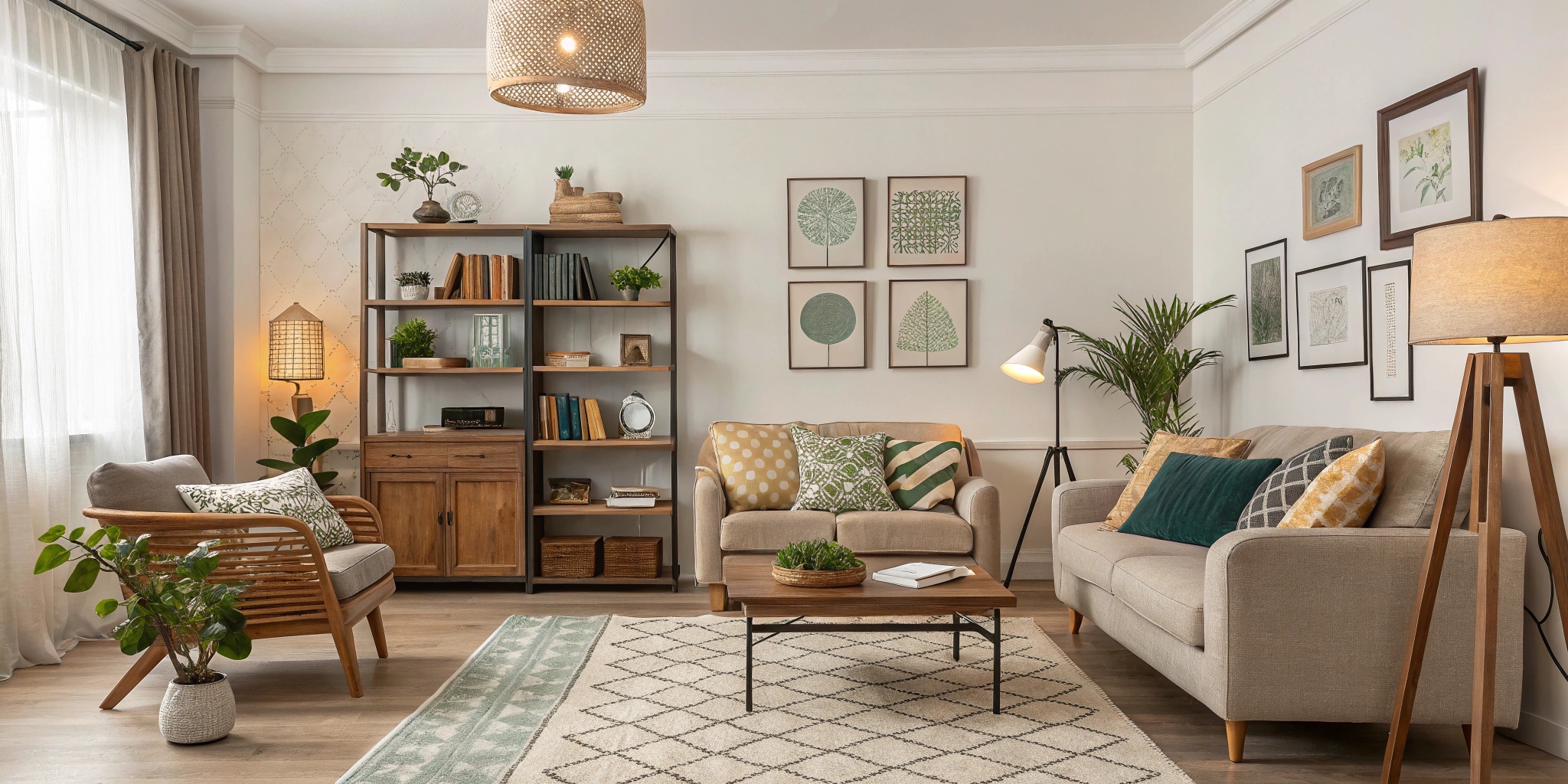When decorating your home, it’s easy to get caught up in trends, excitement, and creative inspiration. However, even the best intentions can lead to some common mistakes that can detract from your home's overall aesthetic and functionality. Whether you’re a seasoned decorator or a first-time home designer, it's important to avoid certain pitfalls to create a space that feels balanced, stylish, and practical. Here are five common home decor mistakes and tips on how to avoid them.
1. Overcrowding the Space with Furniture
One of the most common mistakes in home decor is overcrowding a room with too much furniture. While it may be tempting to fill every inch of a space with stylish pieces, this can make the room feel cramped and cluttered. To avoid this, focus on selecting only the furniture that serves a specific function and complements the space’s layout. Consider the room’s size and scale—leave some open space around furniture to allow for movement and ensure the room feels airy and comfortable. Prioritize quality over quantity, and aim for pieces that enhance the flow of the room.
Ready to bring your vision to life? Book our expert home decor services today and let us help you create a space that reflects your style and enhances your home’s beauty!
2. Ignoring Scale and Proportions
Scale and proportions are critical when it comes to furniture and decor. A common mistake is buying furniture or accessories that are too large or too small for the space. Oversized furniture can overwhelm a small room, while tiny pieces may get lost in a larger area. To avoid this mistake, measure your space carefully and select furniture and decor that are proportional to the room’s size. For example, a large sectional might work well in a spacious living room, but in a smaller space, a compact sofa with a few accent chairs will provide better balance.
3. Lack of Proper Lighting
Lighting is a key element of home decor that many people overlook. Poor lighting can make a beautiful room feel dull and unwelcoming. A single overhead light or dimly lit spaces can create harsh shadows and reduce the overall ambiance. To avoid this, layer your lighting with a combination of ambient, task, and accent lighting. Use floor lamps, table lamps, and pendant lights to create a warm, inviting atmosphere. Consider installing dimmers to adjust the lighting based on the time of day or the mood you want to create in the room.
4. Following Trends Without Considering Your Personal Style
It’s easy to get swept up in the latest design trends, but following them without considering your personal style can lead to a space that feels disconnected or uncomfortable. A room should reflect your personality and be a place where you feel at home. To avoid this, choose elements that align with your tastes and lifestyle. While it’s fun to incorporate trending colors or furniture, make sure your choices work with the overall feel of your space and resonate with your preferences. A timeless, personalized approach to decorating will ensure you love your home for years to come.
5. Neglecting to Create Focal Points
Every room needs a focal point—an element that draws the eye and creates a sense of balance. Without a focal point, a room can feel disjointed or lack direction. A common mistake is scattering decor too evenly throughout the room without focusing on a central feature. To fix this, select one or two elements to serve as a focal point, such as a piece of artwork, a statement piece of furniture, or a fireplace. Arrange the rest of the decor to complement and highlight that feature, creating a visually appealing and harmonious space.
6. Overusing Matching Decor
While symmetry and matching decor can feel harmonious, it can also make a room look too predictable and lacking in personality. A common mistake is overusing matching sets of furniture, pillows, and accessories. To avoid a space that feels too “staged,” mix up your decor to add variety and visual interest. Combine different textures, colors, and patterns to create a layered look that feels more dynamic and personalized. You can mix modern and vintage, or pair bold patterns with neutral tones to keep things exciting yet cohesive.
7. Forgetting to Consider Functionality
Home decor isn’t just about aesthetics—it’s also about functionality. One of the most common mistakes is focusing solely on how a space looks without considering how it will be used. For instance, choosing a beautiful sofa without thinking about comfort, or opting for a chic coffee table that’s impractical for everyday use, can lead to regret later on. To avoid this, always balance style with functionality. Choose furniture and decor that not only looks good but also serves your needs. Think about storage solutions, seating comfort, and the practicality of different materials for your lifestyle.
Decorating your home should be an enjoyable and rewarding experience, but it's easy to make mistakes along the way. By avoiding overcrowding, paying attention to scale, and ensuring functionality alongside style, you can create a space that is both beautiful and livable. Remember, home decor is about creating a space that reflects your personal style, offers comfort, and works for you and your family. Take your time, plan carefully, and enjoy the process of making your home truly yours.


